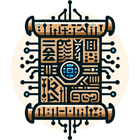SEARCH EVENT
Submissions
 Guidance
Guidance
 Accepted papers
Accepted papers
- Leveraging Part-of-Speech Tagging for Enhanced Stylometry of Latin Literature
Sarah Li Chen, Patrick J. Burns, Thomas J Bolt, Pramit Chaudhuri, Joseph P. Dexter - Ancient Wisdom, Modern Tools: Exploring Retrieval-Augmented LLMs for Ancient Indian Philosophy
Priyanka Mandikal ★ outstanding paper - Latin Treebanks in Review: An Evaluation of Morphological Tagging Across Time
Marisa Hudspeth, Brendan O’Connor, Laure Thompson - SumTablets: A Transliteration Dataset of Sumerian Tablets
Cole Simmons, Richard Diehl Martinez, Dan Jurafsky - A deep learning pipeline for the palaeographical dating of ancient Greek papyrus fragments
Graham West, Matthew I. Swindall, James H. Brusuelas, Francesca Maltomini, Marius Gerhardt, Marzia D’Angelo, John F. Wallin - Towards Context-aware Normalization of Variant Characters in Classical Chinese Using Parallel Editions and BERT
Florian Kessler - CuReD: Deep Learning Optical Character Recognition for Cuneiform Text Editions and Legacy Materials
Shai Gordin, Morris Alper, Avital Romach, Luis Daniel Saenz Santos, Naama Yochai, Roey Lalazar - Coarse-to-Fine Generative Model for Oracle Bone Inscriptions Inpainting
Shibin Wang, Wenjie Guo, Yubo Xu, Dong Liu, Xueshan Li ★ outstanding paper - UFCNet: Unsupervised Network based on Fourier transform and Convolutional attention for Oracle Character Recognition
Yanan Zhou, Guoqi Liu, Yiping Yang, Linyuan Ru, Dong Liu, Xueshan Li - Neural Lemmatization and POS-tagging models for Coptic, Demotic and Earlier Egyptian
Aleksi Sahala, Eliese-Sophia Lincke - Deep Learning Meets Egyptology: a Hieroglyphic Transformer for Translating Ancient Egyptian
Mattia De Cao, Nicola De Cao, Angelo Colonna, Alessandro Lenci - Lacuna Language Learning: Leveraging RNNs for Ranked Text Completion in Digitized Coptic Manuscripts
Lauren Elizabeth Levine, Cindy Tung Li, Lydia BremerMcCollum, Nicholas E. Wagner, Amir Zeldes - A new machine-actionable corpus for ancient text restoration
Will Fitzgerald, Justin Barney - Long Unit Word Tokenization and Bunsetsu Segmentation of Historical Japanese
Hiroaki Ozaki, Kanako Komiya, Masayuki Asahara, Toshinobu Ogiso - Classifier identification in Ancient Egyptian as a low-resource sequence-labelling task
Dmitry Nikolaev, Jorke Grotenhuis, Haleli Harel, Orly Goldwasser - Classification of Paleographic Artifacts at Scale: Mitigating Confounds and Distribution Shift in Cuneiform Tablet Dating
Danlu Chen, Jiahe Tian, Yufei Weng, Taylor Berg-Kirkpatrick, Jacobo Myerston - MsBERT: A New Model for the Reconstruction of Lacunae in Hebrew Manuscripts
Avi Shmidman, Ometz Shmidman, Hillel Gershuni, Moshe Koppel - Challenging Error Correction in Recognised Byzantine Greek
John Pavlopoulos, Vasiliki Kougia, Esteban Garces Arias, Paraskevi Platanou, Stepan Shabalin, Konstantina Liagkou, Emmanouil Papadatos, Holger Essler, Jean-Baptiste Camps, Franz Fischer ★ outstanding paper - Exploring intertextuality across the Homeric poems through language models
Maria Konstantinidou, John Pavlopoulos, Elton Barker - The Metronome Approach to Sanskrit Meter: Analysis for the Rigveda
Yuzuki Tsukagoshi, Ikki Ohmukai - UD-ETCSUX: Toward a Better Understanding of Sumerian Syntax
Kenan Jiang, Adam G Anderson - Adapting transformer models to morphological tagging of two highly inflectional languages: a case study on Ancient Greek and Latin
Alek Keersmaekers, Wouter Mercelis - "Gotta catch `em all!": Retrieving people in Ancient Greek texts combining transformer models and domain knowledge
Marijke Beersmans, Alek Keersmaekers, Evelien de Graaf, Tim Van de Cruys, Mark Depauw, Margherita Fantoli - Detecting Narrative Patterns in Biblical Hebrew and Greek
Hope McGovern, Hale Sirin Ryan, Tom Lippincott, Andrew Caines - Restoring Mycenaean Linear B 'A&B' series tablets using supervised and transfer learning
Katerina Papavassileiou, Dimitrios Kosmopoulos - Application of Machine Learning to the Critical Edition of Ancient Greek Inscriptions: Ithaca and the Corpus of Oracular Inscriptions of Dodona
Elena Martín González - A Dataset for Metaphor Detection in Early Medieval Hebrew Poetry
Michael Toker, Oren Mishali, Ophir Münz-Manor, Benny Kimelfeld, Yonatan Belinkov - Predicate Sense Disambiguation for UMR Annotation of Latin: Challenges and Insights
Federica Gamba
